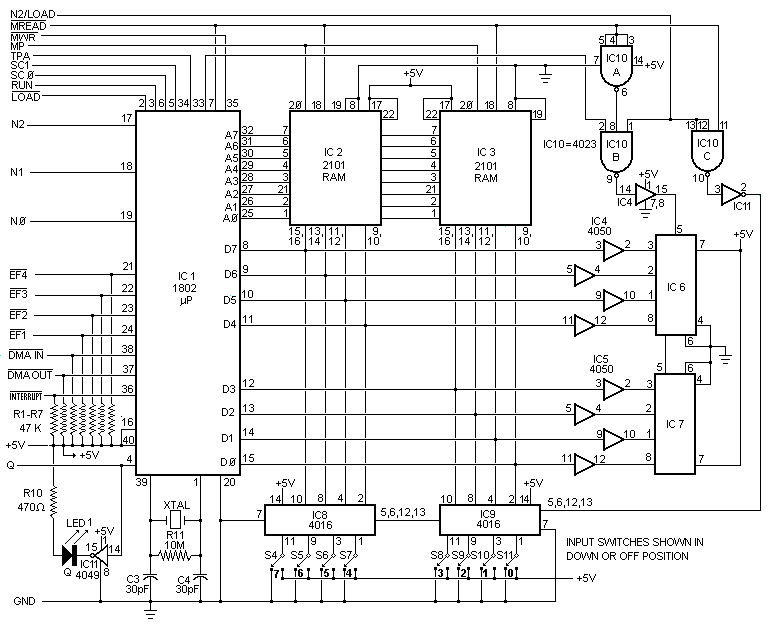
Fig. 4. Complete circuit for the Elf computer. Identified connections on the left go to the "front panel" with the eight data switches. The remaining can be left "floating" at 1802, or tied to terminal strip.
PARTS LIST
|
|
|
5½" x 2" (14 x 5.1cm) piece of thin
aluminum; ¾" x 3/8" (19.1 x 9.5 cm) pine
for chassis rails; 14-pin IC sockets (4);
16-pin IC sockets (3); 22-pin IC sockets
(2); 40-pin IC socket; connector for
power supply; 9-volt, 350-mA dc power
source; 1¼" x ¾" x 1/8" (31.8 x 19.1 x
3.2 mm) piece of aluminum; dry-transfer
lettering kit; machine and wood
hardware; hookup wire; solder; etc.
Note: the CDP1802 COSMAC microprocessor chip is available from any RCA parts distributor as is the COSMAC user manual. |